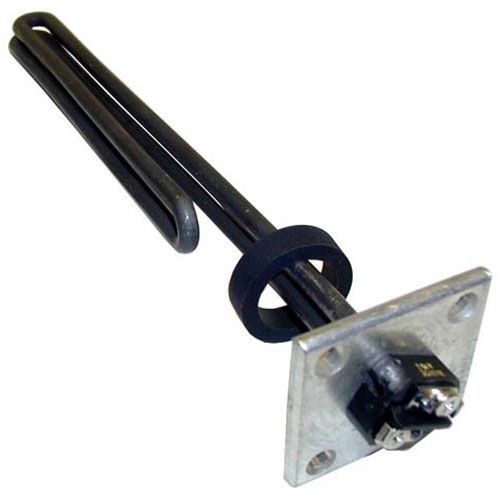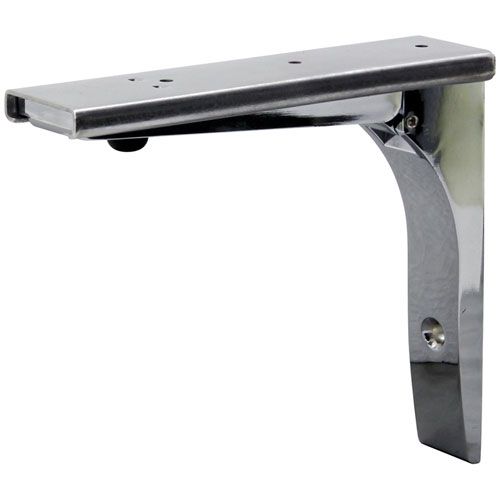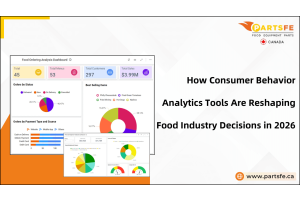Cybersecurity in the Restaurant Industry: Best Practises to Prevent Costly Breaches
The restaurant industry, like many other sectors, has embraced the digital revolution. With online ordering systems, point-of-sale (POS) terminals, customer databases, and automated inventory tracking, restaurants rely heavily on technology. However, this increasing dependence on digital platforms has made the industry an attractive target for cybercriminals. A cybersecurity breach in a restaurant can result in severe financial and reputational damage. In this article, we will explore the critical aspects of cybersecurity in the restaurant industry and offer actionable steps to prevent costly breaches.
The Growing Threat of Cyber Attacks in Restaurants
Cyberattacks in the restaurant industry have surged in recent years, primarily due to the rise of digital payment systems and e-commerce platforms. Criminals target restaurants for several reasons:
- Customer Payment Data: Restaurants handle significant amounts of payment card data, making them lucrative targets for hackers. Credit card details, if compromised, can be used for fraudulent activities.
- Lack of Strong Security Protocols: Many small to medium-sized restaurants do not have robust cybersecurity measures in place. Limited IT budgets and expertise contribute to vulnerabilities in their networks.
- Third-Party Vendors: Restaurants often use third-party systems such as online ordering platforms and reservation apps. These external services can become weak points if they are not properly secured.
The Consequences of Cybersecurity Breaches in Restaurants
A cybersecurity breach in a restaurant can have devastating consequences, including:
- Financial Losses: Breaches can lead to direct financial losses, either through theft or the cost of mitigating the damage. Fines related to regulatory violations (e.g., GDPR, PCI DSS) can further compound financial damage.
- Loss of Customer Trust: Customers may lose faith in a restaurant if their personal or payment information is compromised. This can lead to decreased sales and negative online reviews.
- Operational Disruptions: A breach could disrupt daily operations, causing delays in service, lost orders, and even temporary closures. This downtime can result in further financial loss.
- Legal Liability: Restaurants that fail to protect customer data may face lawsuits and legal ramifications, leading to costly settlements.
Key Vulnerabilities in Restaurant Cybersecurity
To effectively protect against cyberattacks, restaurant owners need to understand the most common vulnerabilities in their systems. These include:
-
Point-of-Sale (POS) Systems: The POS system is one of the primary targets for cybercriminals. If a POS system is compromised, hackers can gain access to payment card data. Outdated or unpatched POS software is particularly vulnerable to attacks.
-
Unsecured Wi-Fi Networks: Offering free Wi-Fi is a common practice in restaurants, but unsecured networks can be an entry point for cybercriminals. Hackers can exploit these open networks to intercept sensitive data from both customers and employees.
-
Phishing Attacks: Phishing is a method where attackers send fraudulent emails or messages to trick restaurant staff into providing sensitive information such as login credentials or account details. Once obtained, this data can be used to access secure systems.
-
Weak Passwords and Authentication: Many restaurants use weak passwords or fail to implement multi-factor authentication (MFA) for access to critical systems. This makes it easier for hackers to breach security protocols.
-
Third-Party Vendors: Restaurants often use third-party services for online ordering, inventory management, or delivery. If these vendors do not maintain high levels of cybersecurity, they can become entry points for hackers.
Best Practices for Preventing Cybersecurity Breaches
Preventing cybersecurity breaches in the restaurant industry requires a combination of technology, employee training, and proactive monitoring. Below are key best practices that restaurant owners can implement to protect their business:
- Secure the POS System
Since the POS system is a prime target for hackers, securing it should be a top priority. Restaurants should ensure that their POS software is updated regularly and that any patches or updates from the vendor are promptly installed. Consider switching to cloud-based POS systems, which offer better security features such as encryption and remote monitoring. Additionally, encrypting all transaction data and using firewalls to protect the POS network will significantly reduce the risk of breaches.
-
Implement Strong Password Policies and Multi-Factor Authentication
Using strong passwords and implementing multi-factor authentication (MFA) across all systems is a simple yet highly effective way to improve security. Employees should be required to create complex passwords that include a combination of letters, numbers, and symbols. Passwords should be changed regularly, and sharing login credentials should be strictly prohibited.
MFA adds an extra layer of security by requiring users to provide two forms of identification before accessing systems. For example, employees may need to enter a password and verify a one-time code sent to their phone. This significantly reduces the likelihood of unauthorized access, even if a password is compromised.
-
Use Encrypted, Secure Wi-Fi Networks
Restaurants that offer free Wi-Fi to customers should ensure that they are using encrypted and secure networks. Public Wi-Fi networks are notoriously easy for hackers to exploit. To protect against this, set up separate networks for customers and staff, each secured with unique passwords. Employees should never use the public Wi-Fi to access POS systems or internal software.
-
Train Employees on Cybersecurity Awareness
Employee training is one of the most effective ways to prevent cyberattacks. Regularly educating staff about phishing attacks, secure password practices, and the importance of cybersecurity can significantly reduce human error, which is often a contributing factor in breaches. For example, employees should be trained to recognize suspicious emails and avoid clicking on unknown links or downloading attachments from untrusted sources.
-
Limit Access to Sensitive Data
Not all employees need access to sensitive data or critical systems. By implementing role-based access control, restaurants can restrict access to certain parts of their digital infrastructure based on an employee’s role. This minimizes the risk of data exposure if an employee’s account is compromised. Additionally, consider setting up regular reviews of access privileges to ensure that only authorized personnel have access to sensitive systems.
-
Regularly Update Software and Systems
Hackers frequently exploit vulnerabilities in outdated software. To mitigate this risk, restaurant owners should ensure that all software, including POS systems, security software, and third-party apps, is regularly updated with the latest security patches. Automating these updates can help ensure that no critical patch is missed.
-
Conduct Regular Security Audits and Vulnerability Assessments
Restaurants should perform regular security audits to identify potential vulnerabilities in their systems. A professional cybersecurity firm can conduct vulnerability assessments to pinpoint weaknesses and recommend improvements. These audits should also include evaluating third-party vendors to ensure they adhere to robust security standards.
-
Encrypt Customer Data and Payment Information
Encryption is a powerful tool that scrambles data so that it can only be read by authorized users with the proper decryption key. Restaurants should use encryption protocols for all customer data, including payment card information, email addresses, and reservation details. Encrypting data makes it more difficult for cybercriminals to exploit, even if they gain access to it.
Have a look at How to Overcome Most Common Restaurant Issues & Solutions: Expert Insights
The Role of Compliance in Restaurant Cybersecurity
Regulatory compliance is a crucial aspect of cybersecurity, particularly when handling customer payment information. Restaurants must adhere to the Payment Card Industry Data Security Standard (PCI DSS), which provides guidelines for securely processing, storing, and transmitting credit card data. Non-compliance can result in heavy fines and penalties in the event of a breach.
Key components of PCI DSS compliance include:
- Installing firewalls to protect cardholder data
- Using encryption for transmitted data
- Regularly updating and patching systems
- Monitoring and testing networks for vulnerabilities
In addition to PCI DSS, restaurants should be aware of other regulations, such as the General Data Protection Regulation (GDPR) if they handle customer data from European Union citizens. Compliance with these regulations not only helps prevent breaches but also protects the restaurant from legal liabilities.
The Importance of Incident Response Planning
Even with the best cybersecurity measures in place, breaches can still happen. Having a comprehensive incident response plan can help minimize the damage and restore normal operations as quickly as possible. An effective incident response plan should include:
- Clear protocols for identifying and containing the breach
- Designated roles and responsibilities for team members
- Communication plans to notify customers, vendors, and regulatory authorities
- Procedures for investigating the breach and preventing future attacks
Regularly testing and updating the incident response plan is essential to ensure its effectiveness in the event of a real attack.
Future Trends in Restaurant Cybersecurity
As technology evolves, so too do the methods used by cybercriminals. Looking ahead, restaurant owners must stay informed about emerging cybersecurity trends, such as:
- Artificial Intelligence (AI) and Machine Learning (ML): AI and ML can enhance cybersecurity by identifying unusual patterns or behaviors that indicate a potential breach.
- Blockchain Technology: Blockchain’s decentralized and encrypted nature offers potential for securing payment data and protecting against fraud.
- Zero-Trust Security Models: A zero-trust approach assumes that no user or device is trustworthy by default, requiring strict identity verification for all users attempting to access systems.
By staying proactive and adopting these advanced technologies, restaurants can better protect themselves from future cybersecurity threats.
Read on: Future Trends: What's Next for Restaurant Equipment?
Conclusion: Safeguarding Your Restaurant from Cyber Threats
Cybersecurity in the restaurant industry is no longer optional—it’s a necessity. As the digital landscape continues to evolve, restaurant owners must take proactive steps to protect their businesses, customers, and reputations from cyber threats. By implementing robust security protocols, regularly updating systems, and fostering a culture of cybersecurity awareness, restaurants can significantly reduce the risk of costly breaches.
When it comes to maintaining optimal kitchen operations, sourcing reliable equipment parts is crucial. PartsFe CA provides high-quality commercial restaurant equipment parts, including oven thermostats, grill burners, griddle plates, dishwasher pumps, and ice machine filters. By investing in dependable components from trusted manufacturers, restaurants can ensure their kitchens remain efficient and ready to serve every diner. Regular maintenance and prompt replacement of worn-out parts can significantly reduce downtime, enhancing overall service quality and protecting against costly operational disruptions. Prioritizing equipment reliability is a vital aspect of a comprehensive cybersecurity strategy in the restaurant industry.
FAQs
What is the most common type of cyberattack in the restaurant industry?
Phishing and POS system breaches are the most common types of cyberattacks targeting restaurants.
How can restaurants protect customer payment data?
Restaurants should use encryption, regularly update their POS systems, and comply with PCI DSS standards to secure payment data.
Are small restaurants at risk of cyberattacks?
Yes, small restaurants are often targeted due to their weaker cybersecurity measures and limited resources.
Can a cybersecurity breach lead to legal consequences for restaurants?
Yes, restaurants can face legal liabilities and fines for failing to protect customer data in compliance with data privacy laws.
How can staff training prevent cybersecurity breaches in restaurants?
Regular cybersecurity training helps employees identify phishing attempts and maintain secure operational practices.
















